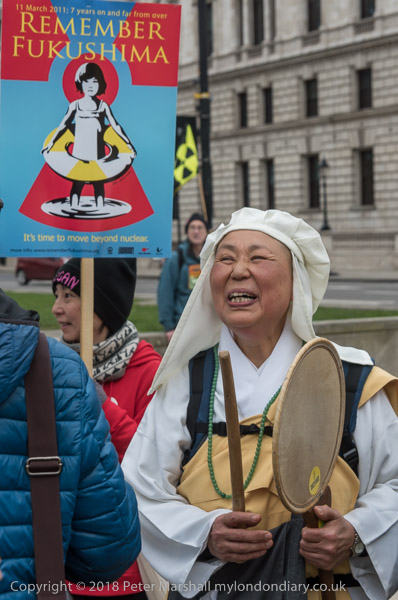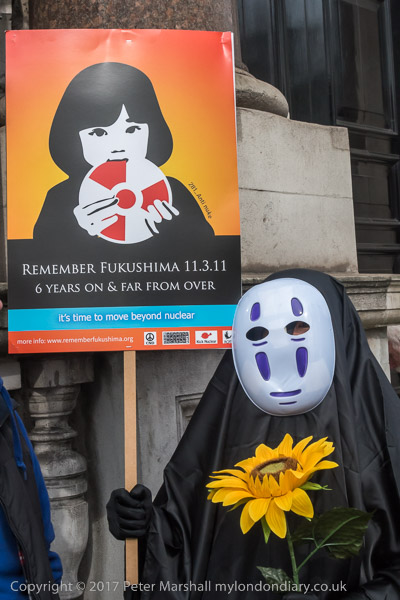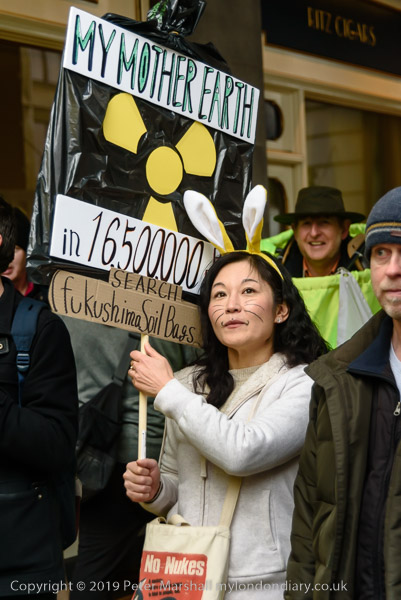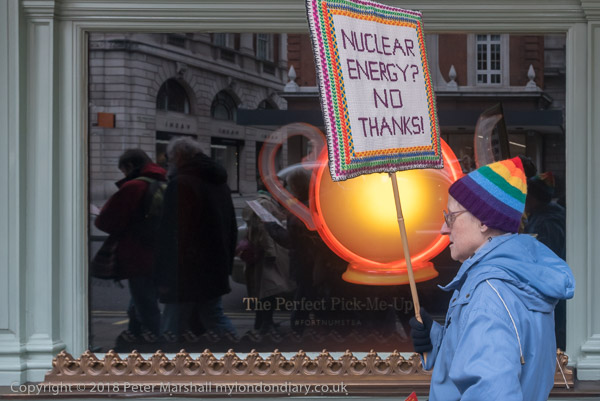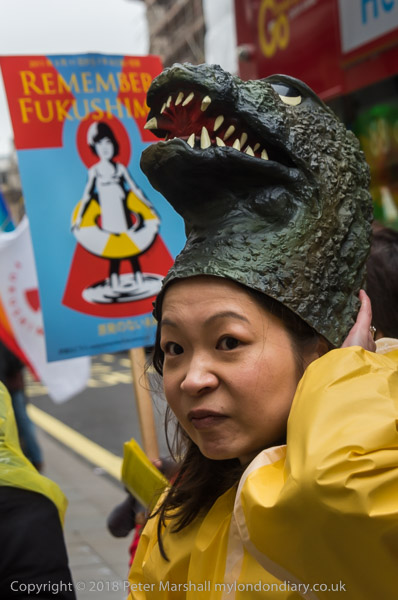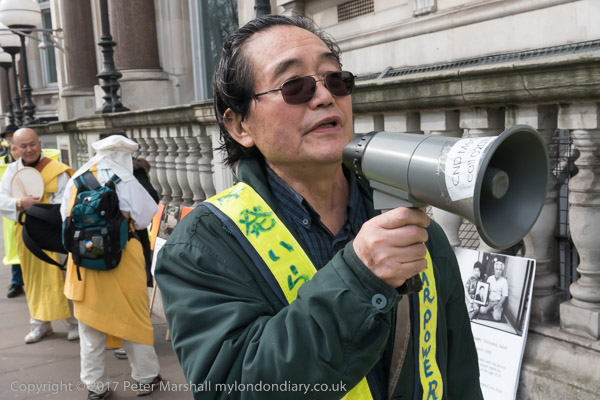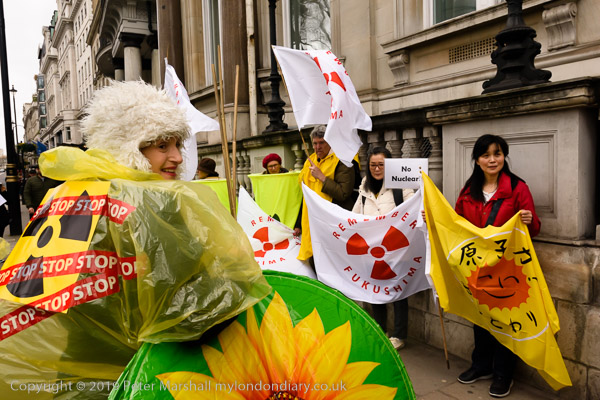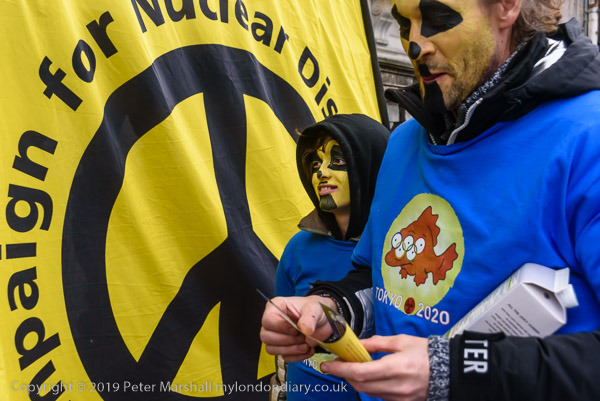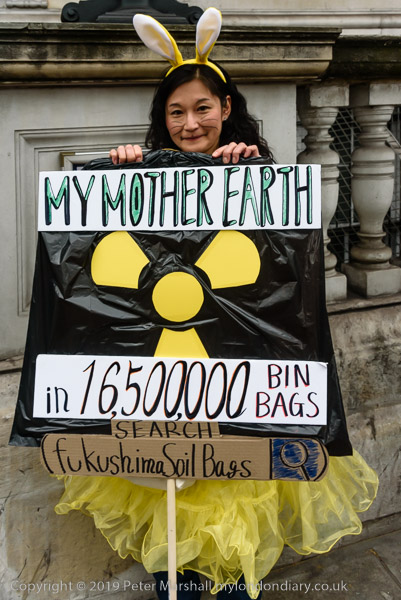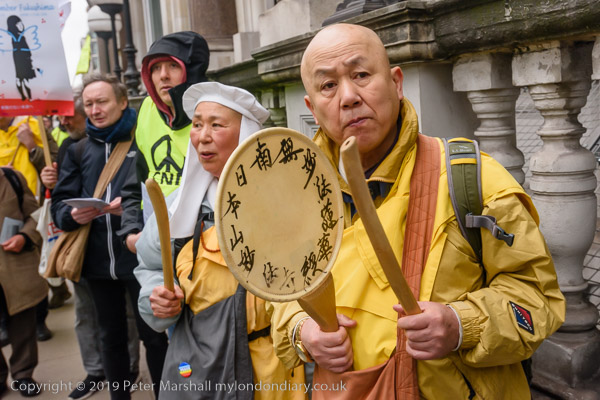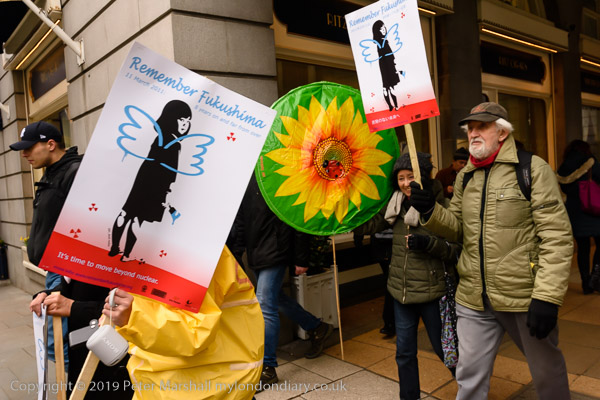Fukushima Anniversary Questions Nuclear Power Safety – London, 9th March 2013
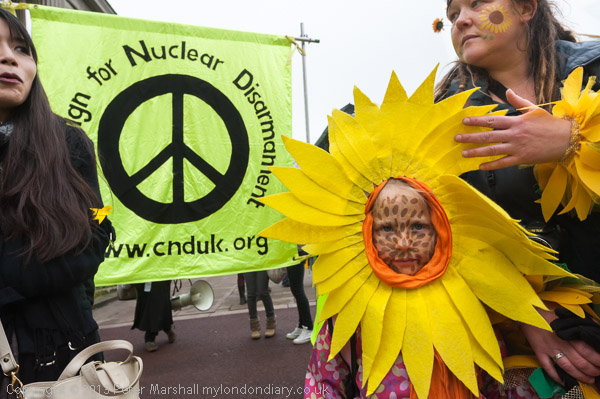
On 11th March 2011 Japan suffered its most powerful recorded earthquake. The Fukushima power plants fusion reactors were immediately shut down and diesel generators started to pump the coolant needed to keep the reactors safe.
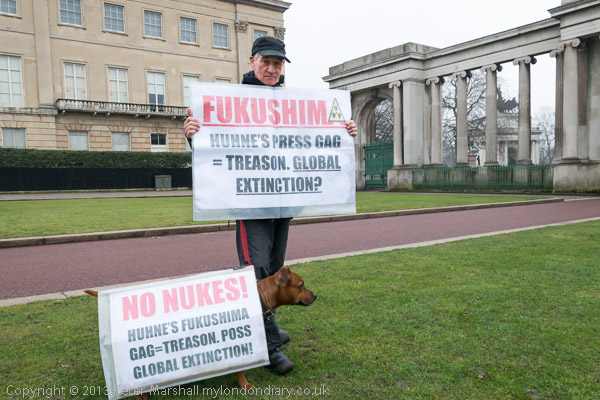
But the earthquake generated a tsunami, with giant 45ft waves which swept over the sea walls of the power plant, flooding and disabling the emergency generators. As Wikipedia states “The resultant loss of reactor core cooling led to three nuclear meltdowns, three hydrogen explosions, and the release of radioactive contamination in Units 1, 2 and 3 between 12 and 15 March.“
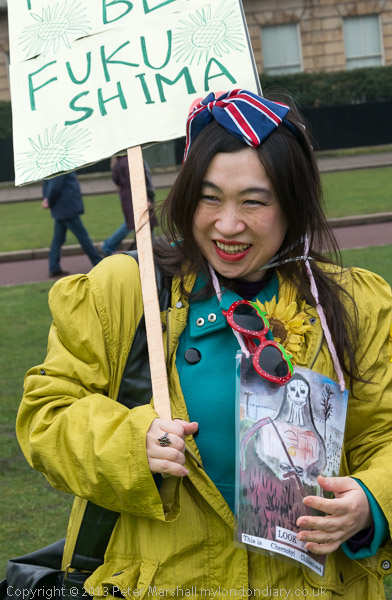
Around 110,000 people were evacuated from a 12 mile exclusion zone around the plant because of airborne radioactive contamination, with many losing their livelihoods as well as their homes. The Tokyo Electric Power Company (TEPCO) who owned the site are still carrying out necessary cleanup of the site and removal of the radioactive fuel debris is expected to take until around 2040 or 2050.
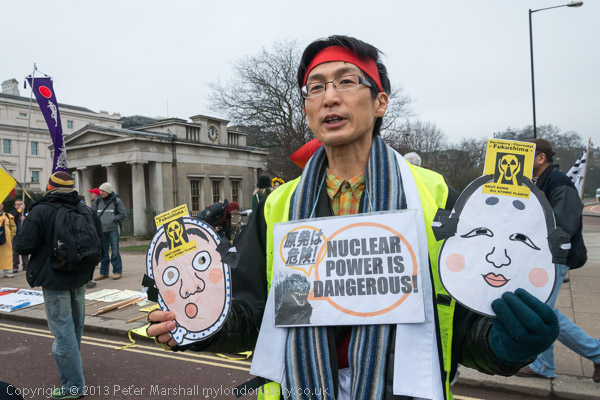
A TEPCO report in 2000 had recommended improved safety measures against seawater flooding, designed to stop tsunami waves greater than those that caused the 2011 disaster, but these and several other warnings were dismissed by the company as unrealistic. Earlier scientist had expressed concerns about the dangers of building nuclear power plants in Japan because of the earthquake problems.
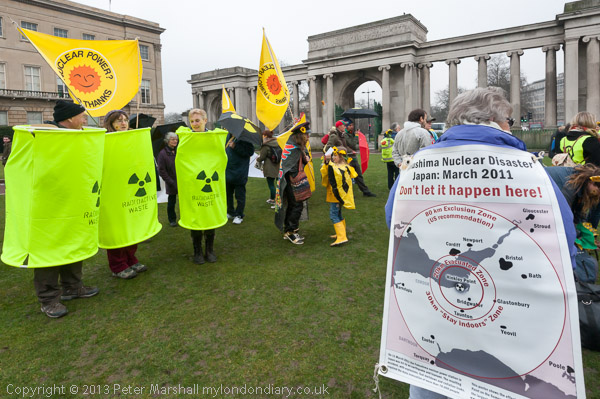
Japanese expatriates in London began a series of weekly protests against nuclear power at the Japanese Embassy on Piccadilly and also protested outside the TEPCO offices in Berkeley Square. The protest on Saturday 9th March was was organised by ‘Japanese Against Nuclear UK’ together with ‘Kick Nuclear’ and CND.
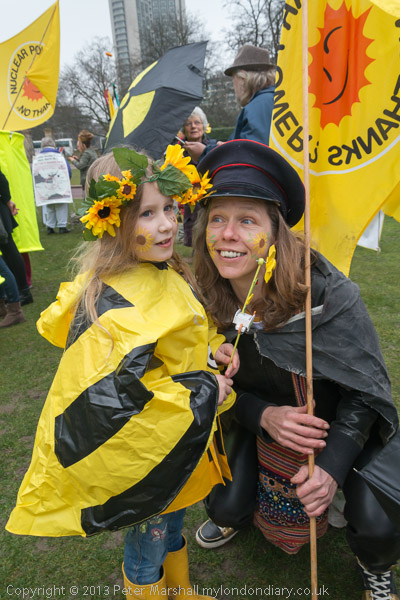
I went to photograph the protesters as they met up for the march at Hyde Park Corner. They intended to make brief protests at several locations including the Japanese embassy, the EDF office and Downing St before ending with a rally and final protest opposite Parliament in Old Palace Yard.
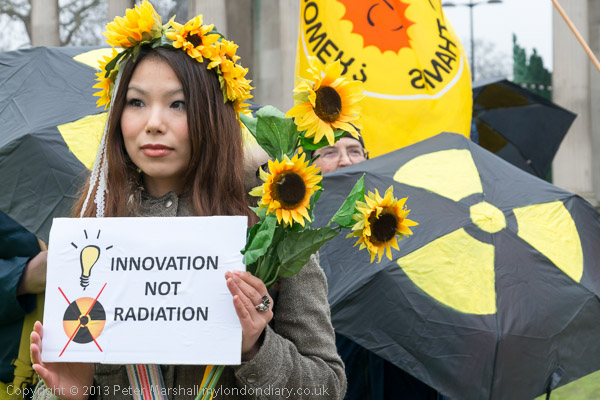
Many of them had come with sunflowers, a symbol of renewable clean energy, particularly solar energy. There were several banners with the smiley sun symbol and the message ‘Nuclear Power? No Thanks’ and a group of people encased in fluorescent yellow barrels with a radioactive danger symbol and labelled ‘Radioactive Waste.’
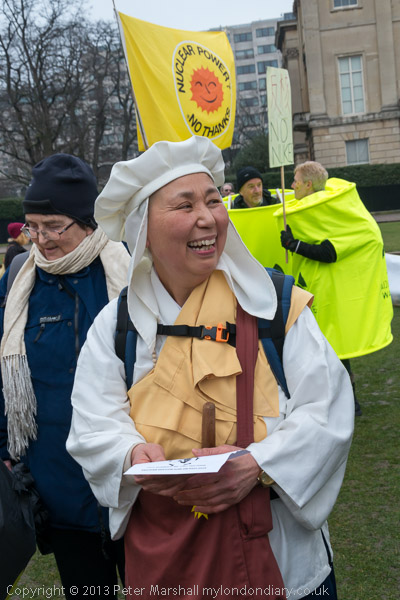
Some of the Japanese protesters had brought Japanese masks used to hide faces at protests in Japan against Fukushima, although many preferred to have sunflowers painted on their faces.
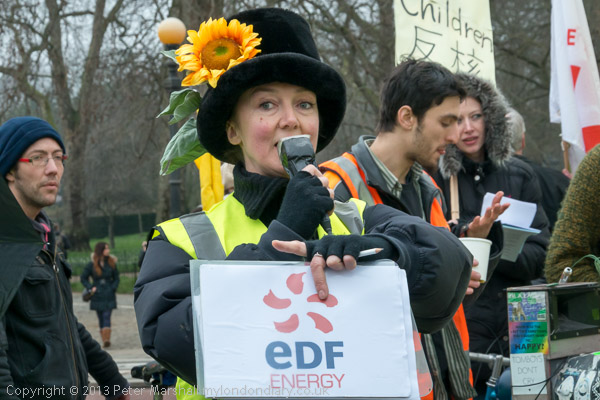
Among those who had come to protest were some who had come on a coach from Somerset, where they were opposing plans by EDF to build a new power station at Hinkley Point. The plans for the first new nuclear reactor in Britain for over 30 years were approved by the EDF board and the UK government in 2016. The first reactor arrived there last month though the project is several years behind time and is now expected by EDF to be completed in 2028.
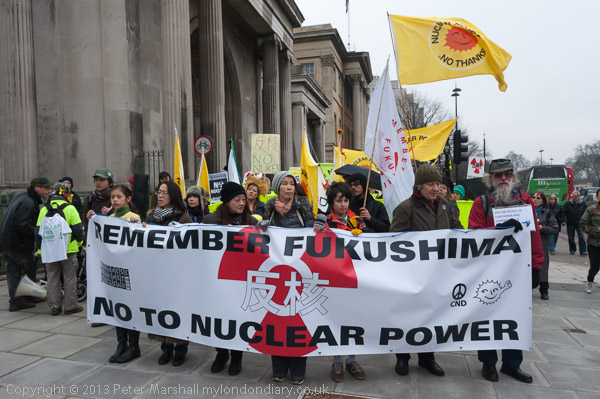
Although some environmentalists have backed nuclear as a necessary part of our energy supply if we are to cut carbon emissions, it seems likely that increases in the efficiency and the continuing drop in costs of renewable alternatives will make the new power station a huge white elephant, producing electricity at a much higher cost guaranteed by the UK government to the developers.
More on My London Diary at Fukushima 2nd Anniversary.
I left the protesters as the march was about to start to go to the Million Women Rise march which was taking place at the same time. You can see more about that at Million Women Rise.
